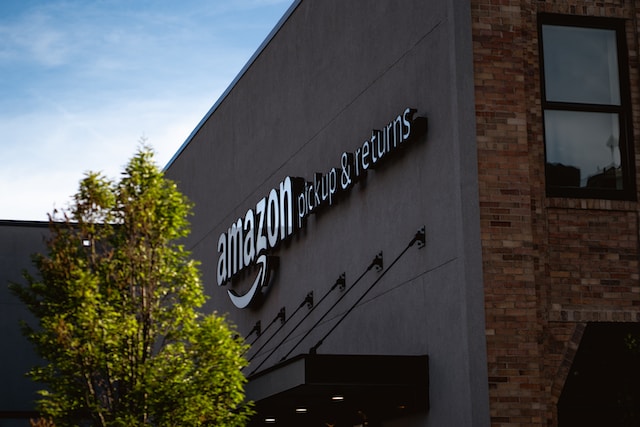Before we get into the specific of Amazon, let’s understand competitor analysis. Competitor analysis is a strategic research method companies use to identify, evaluate, and understand their current and potential competitors within the market. It’s an essential business strategy component and instrumental in understanding the industry landscape.
The process usually involves the following steps:
- Identifying Key Competitors: The first step is to identify who your competitors are. These may be direct competitors (those who offer the same or similar products or services as you) or indirect competitors (those who offer different products or services but compete for the same consumer dollar).
- Analyzing Competitors’ Strategies and Objectives: Once competitors are identified, the next step is to understand their business strategies and objectives. This may involve analyzing their marketing materials, financial performance, customer reviews, or any public information available about the company.
- Assessing Competitors’ Strengths and Weaknesses: This step involves evaluating the identified competitors’ strengths and weaknesses. Strengths could include unique products or services, strong brand recognition, or superior customer service. Weaknesses might include poor product quality, weak customer service, or high prices.
- Understanding Competitors’ Products/Services: It’s important to understand what your competitors offer and how your products or services compare. This could involve looking at features, quality, pricing, customer service, and marketing strategies.
- Observing Competitors’ Reaction Patterns: Some companies react more aggressively than others when faced with competition. Understanding these patterns allows you to predict how these companies might respond to your business strategies.
- Drawing Conclusions and Formulating Strategy: The final step is to take all the information gathered from the analysis, draw meaningful conclusions, and use those to formulate or adjust your business strategies.
The main goal of a competitor analysis is to understand the competitive landscape, spot opportunities, and threats, and position your company most advantageously. It helps to inform strategic decisions, from product development to marketing and sales efforts. Now let’s do a competitor analysis of Amazon.
Here is the competitor analysis of Amazon
Walmart
Walmart is a significant competitor to Amazon, using a variety of strategies to vie for market share:
- Omnichannel Retail: Walmart uses its vast physical store network as an advantage to create an omnichannel retail experience. Customers can order online, pick up in-store, or have items shipped to their homes. This setup is also used for returns, making the process easier for customers. On the other hand, Amazon is primarily an online retailer and is just starting to expand into physical retail.
- Walmart Plus: Walmart launched its own subscription service, Walmart Plus, in 2020. Like Amazon Prime, it offers benefits like unlimited free delivery from stores, fuel discounts, and the ability to shop in-store with a mobile scan & go feature. This move shows Walmart’s intention to compete directly with Amazon’s successful Prime service.
- Third-Party Marketplace: Like Amazon, Walmart has its third-party marketplace. This allows it to offer a wider variety of products without managing the inventory.
- Investment in Technology: Walmart has heavily invested in technologies like automation, AI, and data analytics to improve its supply chain, customer service, and online presence. It has also developed grocery-picking robots for its online grocery business.
- Online Grocery Sales: Walmart has succeeded in online grocery sales, an area where Amazon has struggled. Its numerous physical locations allow for easy pickup or delivery of online grocery orders.
- Acquisitions and Partnerships: Walmart has proactively acquired and partnered with other companies to expand its capabilities. For example, it acquired Jet.com to strengthen its e-commerce business and partnered with Microsoft in an unsuccessful bid to acquire TikTok’s US operations.
- Price Competition: Traditionally, Walmart has been known for its “Everyday Low Prices.” It continues this strategy in its online business, often offering items at lower prices than Amazon.
- Private Label Brands: Walmart has been expanding its private label brands following Amazon’s footsteps. These products often offer higher profit margins than third-party products and can help to drive customer loyalty.
How does Walmart make money: Business Model & Supply Chain Strategy
Alibaba
Alibaba is a significant competitor to Amazon, particularly in China and other parts of Asia. The company uses several strategies to compete:
- Different Business Model: Alibaba primarily operates through its two major platforms, Taobao and Tmall. Unlike Amazon, which often acts as a direct retailer, Alibaba mainly serves as a middleman connecting buyers and sellers. This model has allowed Alibaba to scale quickly and inexpensively.
- International Expansion: While its biggest market is China, Alibaba has tried expanding its international presence. For example, it operates AliExpress, which allows international customers to buy directly from Chinese manufacturers, and Lazada, an e-commerce platform serving Southeast Asia.
- Ecosystem of Services: Alibaba has built a robust ecosystem of services, including cloud computing (Alibaba Cloud), entertainment (Youku), payment services (Alipay), and logistics services (Cainiao). These services help keep consumers within its ecosystem, similar to Amazon’s strategy.
- Alibaba Cloud: Like Amazon with AWS, it has invested heavily in its cloud computing business. As of my last update in 2021, Alibaba Cloud was the leading cloud service provider in the Asia-Pacific region.
- Focus on B2B Services: Alibaba.com is a significant B2B (business-to-business) player, connecting manufacturers and wholesalers globally. While Amazon also has a B2B sector, Alibaba is currently leading in this area.
- Singles’ Day: Alibaba has turned Singles’ Day (11.11) into the world’s largest online shopping event, surpassing Black Friday and Cyber Monday combined. This annual event is a significant revenue driver for Alibaba and helps it solidify its leadership in the e-commerce market.
- New Retail Strategy: Alibaba’s “New Retail” strategy aims to blend online, offline, logistics, and data across a single value chain. The idea is to leverage technology and data to enhance the shopping experience, increase efficiency and drive sales across all retail formats. This strategy directly competes with Amazon’s omnichannel retail approach.
- Partnerships and Investments: Alibaba invests heavily in other businesses to expand its presence and diversify its portfolio. This includes investments in retail, logistics, entertainment, and technology sectors.
eBay
eBay, once a pioneering force in the e-commerce world, has been competing with Amazon in its unique ways:
- Consumer-to-Consumer Sales: Unlike Amazon, which is predominantly a business-to-consumer platform, eBay strongly focuses on consumer-to-consumer sales. This allows individuals to sell new and used goods directly to other consumers, making eBay a go-to platform for unique, collectible, or hard-to-find items.
- Auction Model: eBay’s auction model, which allows sellers to list items for buyers to bid on, is a differentiator. While this format isn’t used for every item on eBay, it’s still a significant part of the platform and something Amazon doesn’t offer.
- Seller Fees: eBay often offers lower seller fees than Amazon, making it an attractive platform for certain sellers. This helps eBay maintain a large and diverse selection of products.
- Global Reach: eBay operates in many countries worldwide, with localized websites for various markets. This allows sellers to reach a global audience, which Amazon offers but not as extensively in some markets.
- eBay Motors: eBay Motors is a popular platform for buying and selling vehicles. This gives eBay a niche that Amazon doesn’t focus on as much.
- Authenticity Guarantee: For certain categories like luxury watches and sneakers, eBay offers an authenticity guarantee. This helps build trust with consumers and compete with Amazon’s efforts to combat counterfeit goods.
- Managed Payments: eBay has been rolling out its own managed payments system, offering a more streamlined experience for buyers and sellers. This could help eBay better compete with Amazon’s seamless payment process.
How does eBay make money: Business Model & Strategy
Google, part of Alphabet Inc., competes with Amazon in several key areas:
- Online Advertising: Google and Amazon are two of the most prominent players in online advertising. While Google’s advertising business has traditionally been much more prominent, Amazon’s advertising business has proliferated, especially within its platform, where businesses pay to promote their products.
- Cloud Computing: Google Cloud Platform (GCP) competes directly with Amazon Web Services (AWS). Both platforms provide businesses with a suite of cloud-based services, including data storage, machine learning, and other IT services.
- Smart Home Devices: Google’s Nest products compete directly with Amazon’s Echo line. Both companies offer smart speakers, smart displays, and other devices that allow users to control their home automation systems using their voice.
- Digital Media Content: Google’s YouTube platform competes with Amazon’s Prime Video for users’ attention and advertising dollars. Both companies have invested in original content to attract and retain users.
- E-commerce: Google Shopping is a direct competitor to Amazon’s e-commerce platform. Google has been investing more in this area, including introducing features like zero commission fees and integration with Shopify.
- Product Search: Many consumers start their product search directly on Amazon, bypassing traditional search engines like Google. This threatens Google’s core search advertising business, and Google has responded by improving its Shopping experience.
- Virtual Assistants: Google Assistant competes with Amazon’s Alexa as a voice-activated AI assistant. Both can answer questions, play music, and control smart home devices, among other tasks.
- Books and Reading: Google Books competes with Amazon’s Kindle and Audible in the digital books and audiobook market.
How does Google make money? What is Google’s Business Model?
Microsoft
Microsoft competes with Amazon on several fronts, particularly in cloud services, artificial intelligence, and consumer electronics. Here’s a breakdown of some of the primary areas of competition:
- Cloud Services: The most significant competition between Microsoft and Amazon is cloud computing services. Amazon Web Services (AWS) and Microsoft Azure are two of the largest cloud platforms globally, offering similar services, including Infrastructure as a Service (IaaS), Platform as a Service (PaaS), and Software as a Service (SaaS).
- Artificial Intelligence: Microsoft’s Cortana competes with Amazon’s Alexa in the digital personal assistant space. While Alexa has a more significant presence in consumer electronics, Cortana is deeply integrated into Microsoft’s productivity and enterprise products.
- Productivity Software: Microsoft’s Office 365 suite directly competes with Amazon WorkDocs and WorkMail. While Microsoft has a commanding lead in this space, Amazon has been making efforts to catch up.
- Gaming: Amazon has entered the gaming industry, competing with Microsoft’s Xbox platform. Amazon Game Studios develops games, and Amazon Luna is a cloud gaming service that competes with Microsoft’s xCloud.
- Online Retail: Although not a direct competitor to Amazon’s primary e-commerce business, Microsoft does operate its own online stores where it sells its products and a variety of third-party electronics.
- E-readers and Tablets: Microsoft’s Surface devices, particularly the tablet models, are indirect competitors to Amazon’s Kindle e-reader and Fire tablets.
- Online Advertising: While smaller in scope compared to Amazon and Google, Microsoft’s Bing search engine and LinkedIn social network both represent avenues for online advertising.
- Streaming Services: Microsoft has moved into video and music streaming services, competing with Amazon Prime Video and Amazon Music.
- Physical Retail: While Amazon has expanded into physical retail with Amazon Books, Amazon Go, and Whole Foods, Microsoft has also operated physical retail stores in the past, though it announced in 2020 that it would be shifting focus to digital sales.
How does Microsoft make money: Business Model & Strategy
Apple
Apple and Amazon compete in several areas, including digital content, smart home devices, cloud services, and more:
- Digital Content: Apple’s iTunes and Apple TV+ compete directly with Amazon’s Prime Video and Music services for video and music streaming. Both companies also have digital book offerings (Apple Books and Amazon Kindle).
- Smart Home Devices: Apple’s HomePod and HomePod mini compete with Amazon’s Echo devices in the smart home market. These devices are hubs for home automation and vehicles for each company’s voice assistant—Siri for Apple and Alexa for Amazon.
- Cloud Services: Apple’s iCloud and Amazon Web Services (AWS) offer cloud storage and other services. While they target somewhat different audiences (iCloud is primarily for personal use, while AWS has a broader range of services targeting businesses), they are competitors in the larger cloud services market.
- E-commerce: While Apple’s online and physical retail stores focus mainly on selling its products, they compete with Amazon and other retailers to sell electronics and related accessories.
- Tablets: Apple’s iPad competes directly with Amazon’s Fire tablets in the tablet market.
- Voice Assistants: Apple’s Siri competes with Amazon’s Alexa in the market for AI-powered voice assistants.
- Payments: Apple Pay, a mobile payment and digital wallet service, can be seen as a competitor to Amazon Pay.
- Streaming Devices: Apple TV competes with Amazon Fire TV in the market for devices that stream digital content to a television.
What does Apple do | How does Apple make money | Business Model
Shopify
Shopify competes with Amazon in e-commerce, but they have somewhat different models and serve different needs. Here’s how Shopify competes with Amazon:
- Merchant Empowerment: Shopify’s primary strategy is to empower merchants to create branded online stores. Shopify provides a platform that lets businesses control their branding, customer relationships, and overall shopping experience. On the other hand, Amazon is a marketplace where multiple sellers list their products, often resulting in direct competition with other sellers and Amazon’s private-label products.
- Subscription Model: Shopify operates on a subscription model, where merchants pay a monthly fee to use the platform’s tools and services. This contrasts with Amazon’s model, where sellers pay a fee per item sold and may also pay additional fees for services like fulfillment.
- Third-Party Integrations: Shopify’s platform allows for many third-party integrations, offering flexibility for merchants to customize their store with various apps and tools. This will enable businesses to tailor the platform to their specific needs.
- Shopify Fulfillment Network: To compete with Amazon’s logistics and fulfillment services, Shopify has introduced its own Shopify Fulfillment Network, providing merchants access to storage, packing, and shipping services.
- Shopify Plus: For larger businesses and enterprises, Shopify offers Shopify Plus. This provides more advanced features and can be a viable alternative for brands considering selling on Amazon or wanting to diversify their online presence.
- Shop Pay and Financial Services: Shopify offers its payment gateway, Shop Pay, which competes with Amazon Pay. They have also introduced Shopify Capital, which provides loans to merchants – a service somewhat similar to what Amazon offers with Amazon Lending.
- Shopify POS: Shopify also offers a Point of Sale system for brick-and-mortar retailers, enabling them to synchronize their online and offline sales. While Amazon also caters to physical retailers (through Amazon Go and Amazon Books stores and the acquisition of Whole Foods), this is a clear competition area.
How does Shopify make money | Business Model











